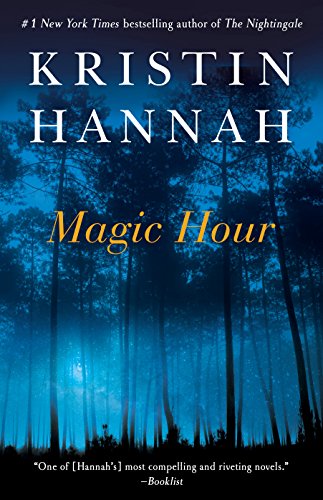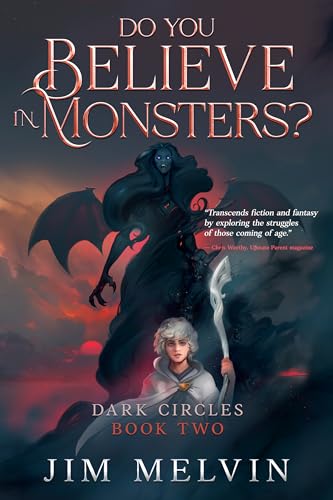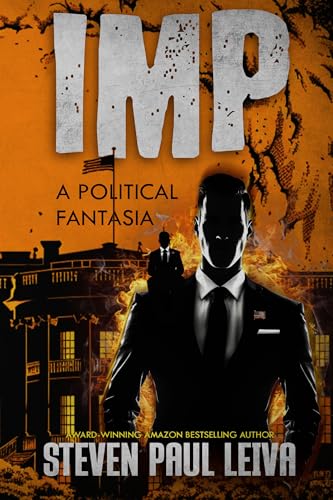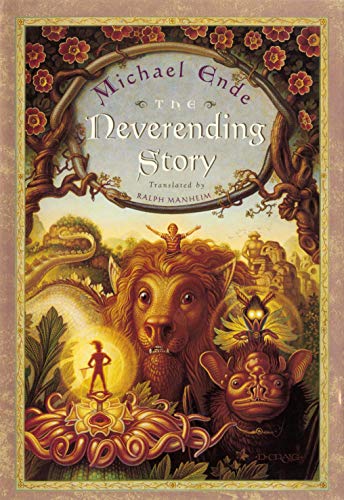“Outstanding start to a science fiction series…”
Will the human race have any chance
to survive?
At the end of the 22nd century, a young scientist experiences mankind’s first contact with an extraterrestrial civilization — a culture more advanced than we are — and no one knows what the future will bring.
The Contact Episode One
by Albert Sartison
Praise for The Contact:
“…combines scientifically plausible technology with realistic human reactions…”
“…Well developed characters…I especially liked Clive (reminds me a little of Sheldon Cooper from The Big Bang Theory :)…Fast pace, realistic situations….Worth a read even if sci-fi is not a particular interest.”
an excerpt from
The Contact
(Episode One)
by Albert Sartison
Prologue
The spacecraft reaches Mercury at the intended time and begins sending signals to determine the precise orbit of the planet. The experiment begins that evening. A command is sent to increase the speed of Mercury from the Experiment Control Centre at the moon base. Three hours later, the International Space Station, scientists at the moon station and also many other groups of scientists on Earth, register an increase in the diameter of Mercury’s orbit round the Sun by two percent. Once the experiment is over, Mercury’s orbit is slowed down to its previous level.
Soon after, a Chilean observatory observes a space object moving from outer space which could potentially collide with Earth. Precise calculations of its flight trajectory are not yet possible because it is so far away, and the orbital telescopes, even those in orbit round the gas giants, are currently being used in support of an experiment testing remote manipulation technology. In view of the low speed of the object, the time for it to reach the Earth’s orbit is estimated as hundreds of years, so a low priority is given to clarifying its trajectory. Nevertheless, the instruction is entered into the central computer for a second observation of the object a week later, to confirm the low priority status.
At the next observation session, the object is not detected. The telescope control system probes the space sectors in the region of the assumed location. The unidentified space body is eventually detected, but its actual position differs greatly from that initially assumed. Following its programmed instructions, the telescope computer corrects the calculation data and raises the priority for finally calculating the trajectory. The third observation session is appointed for 24 hours later.
The third observation session reveals an even greater calculation error. The Chilean telescope’s automatic control system has to notify the scientific personnel…
Error
With his dirty trainers up on the table, Steve, a final year astrophysics student working as a junior scientific assistant at the observatory in his spare time, was fast asleep. A relay suddenly clicked, switching on the display of the main monitor, shining a broad ray of bright light oppressively on the sleeping Steve. He half-opened one eye and sleepily looked at the message:
UNIDENTIFIED OBJECT FOUND.
MAY COLLIDE WITH INNER PLANETS.
IMPOSSIBLE TO CALCULATE ITS TRAJECTORY.
In a hoarse voice (due to an excess of cold beer and loud serenades last night), Steve commanded:
“Give additional information.”
Columns of figures floated onto the screen. His head was working slowly, but his gaze automatically picked up the main information: the size of the object, the parameters of its motion, its brightness…
“So what’s the problem?” thought Steve.
He got up and went to pour himself a coffee. Opening the kitchen cupboard door, he discovered, with astonishment, that there was an amulet on his right wrist. It took a full minute for him to recall what had happened after he left the student pub “Minus Alpha” with his friends. They had been to a party there, nothing had come of it. He scratched the back of his neck, fetched a mug, filled it from the percolator and went back to his place.
The main screen was still filled with information about the strange object from the depths of the Universe. Steve sat down, took a gulp of coffee and grimaced, pushing the mug away, and began quickly leafing through the contents of the log file.
First observation more than a week ago. Trajectory… Speed… Direction… Second observation. Trajectory… Speed… Direction… Error correction… Speed correction factor twenty three and five? Somewhat high. Third observation, error correction factor seventy eight?
“Well, that’s way too much,” Steve thought.
He reached out for the mug, picked it up, but remembering how vile the contents had tasted, put it back. He had finally woken up.
Speed estimate error of seventy-eight-fold, why so great? The telescope had never made an error before at distances like that. When they measured Mercury’s orbit a fortnight ago, it was accurate to within one hundredth of a permille. But here… Yes, the object was at the edge of the Solar System, but…
Steve started the orbit simulator. The simulation program opened where it had ended last time – on “advanced collision model”. Steve, sitting at the computer, rolled up his eyes and sighed. ‘ADVANCED COLLISION MODEL’, what sort of an idiot would call his degree thesis that? The ACM was the brainchild of Clive, one of his fellow students on the same course, and probably the most famous nerd in the whole space science faculty. Steve remembered him from his very first days at the university. The first-year students, still wet behind the ears, gathered in the lecture hall and were given instructions by the entire teaching staff, including the Dean of the faculty. The Dean’s speech was interrupted by Clive raising his hand. The Dean, Mr. Shelby, well respected by the students for his informal and honest manner, broke off his speech, smiled and asked Clive what he wanted to know. Clive stood up, coughed, quoted a passage from the work of some theoretical astrophysicist and asked Shelby what he thought of it. The grey-haired old man looked round the new students and his colleagues, and then turned back to Clive, who was waiting in silence.
“Very interesting work,” replied Shelby, still smiling. “One of our research groups is studying this question. Ask Dr. Kubinski, he will be glad to answer all your questions.”
Clive, as cool as a cucumber, wrote down the group leader’s name, thanked Shelby and sat down.
Steve, observing from the sidelines, thought Clive’s behaviour was contrived. He thought at that time that he was just showing off to an audience. But over the past few years, having come to know him better, Steve realised that this was not a game. It was in Clive’s nature, he really was like that: rather inept in social relations, but a truly gifted person as far as science was concerned.
Steve’s thoughts returned to the computer. He selected “Solar System”. With its usual deftness, the computer simulated the Sun and the planets. He added the strange object, clarified its parameters and started the simulation. If the speed of the object was the same as for the previous measurement, the object should not be anywhere near where it actually was. Could the computer be in error again? Steve commanded:
“Assume object acceleration.”
The computer altered the parameters of motion of the object and assumed that the object was moving at a constant acceleration.
“Find acceleration value.”
If it was assumed that the object was accelerating, the trajectory anomaly disappeared. That was fine, but this object was not any kind of spacecraft. How could an object of natural origin accelerate so far from high-mass celestial bodies?
So. What could accelerate this object? Ejection of material? Highly unlikely, that could not impart so much force. Judging from its trajectory, it was flying in from outer space, from the direction of the Omega Nebula. The distance – Steve looked it up in the catalogue of celestial bodies – was about five thousand light years. He looked at his reflection in the switched-off monitor to his right and carried on thinking, “The body really is increasing its speed. It doesn’t appear to be an artificial object, though that will have to be checked.”
He waved a finger, and the virtual problem icon appeared on the main monitor. Steve, now under the spell of scientific curiosity, commanded:
“Try to identify object as human made artefact. Go.”
“Failed to identify object as human made artefact.”
Steve looked inquiringly at his reflection on the black display on the right. The reflection declined to comment. Steve absentmindedly took a gulp of coffee and immediately spat it out.
“Ugh, that’s vile!”
He tipped the coffee into Clive’s flower vase. The guy would be annoyed, but there was no time to think about that right now. Steve ordered the computer to check if any lost spacecraft could be on the course of the strange object. Taking account of fuel reserve and engine thrust, several craft were theoretically able to carry out the necessary manoeuvre and come onto such a course. Yes, but why? And how?
Four lost craft had the required fuel reserve: two of them were transports, completely automatic interplanetary shuttles. One was used for delivering materials for construction work on Europa, a satellite of Jupiter. The other was transporting fuel. They had both been lost in the vicinity of Mars. Assuming that they had begin this strange manoeuvre at once, there would theoretically have been time for them to become this strange intruder from space. The third lost spacecraft had people on board – a group of tourists, making a tour round the gas giants. The ship entered the shadow of Saturn and was never seen again. Unfortunately, communication with this spacecraft was impossible, because all the communication satellites in orbit round Saturn were out of radio visibility at the time. The fourth spacecraft was a military one. It had been on a routine patrol in the space between the inner and outer planets. All of a sudden it extinguished its position beacons, after which it too was never seen again.
Naturally, they were searched for. The transport shuttles were half-heartedly sought for the insurance companies, and soon written off. A long time was spent searching for the tourists, although anyone who had worked in the space industry realised that it was a hopeless case. Civilian ships have numerous position beacons. If a ship had come out from Saturn’s radio shadow, it would have been recorded at once by the Interplanetary Flight Coordination Centre. But this did not happen. The last pulse had been sent from one of its beacons minutes before it entered the shadow. Its course was known. After a little over three hours, the tracking computer sounded the alarm. Immediately on receiving the signal, the communication satellites were moved into position to probe the space close to the planet in the radio shadow region. But the ship was not found. It could not have emerged without being noticed, therefore it must have fallen onto the gas giant. As for the military patrol vessel, it was virtually impossible to find it without position beacons. Anyway, the search and rescue function was the responsibility of the military, who were well known for saying as little as possible.
His thoughts were interrupted by the wall clock, which beeped briefly, marking the beginning of a new hour. Steve lifted his eyes to the wall, then looked down at his watch, sighed and switched the computer off. It was already getting dark, the Sun was slowly sinking. It was time to go home and make up for the hours of sleep he had lost in the night-time party.
Steve got up, screwing up his left eye a little because of his headache (he really had had too much to drink the previous evening), and set off.
Something about the stars
Clive, the biggest pain in the neck in the astrophysics faculty, was patiently drawing a Hertzsprung-Russell diagram on the board. He could of course simply have called it up on the screen by lightly waving his finger, but no, as Clive liked to put it, food for thought is only digested when it is thoroughly chewed.
Completing the curve of the sub-giants, Clive turned to the class. The first-year students, who were already used to his little ways, were calmly copying the clumsy squiggles scribbled on the board by Clive. Earlier, the most daring of them would try to criticise Clive’s methods, but this hubris was soon stilled under the unyielding pressure of the Great Pain in the Neck’s logic. The Great Pain in the Neck possessed one very valuable quality: he knew how to explain even the most difficult material in simple language. It was for this reason that the first-course students preferred his lectures to those of the others, and were willing to put up with his grumbling throughout the entire semester. Their reward for this was outstanding knowledge and, as a rule, a good assessment – Clive was a pain in the neck, but he was an honest one, and if a student knew the subject, no power in the Universe could make Clive give him or her a poor assessment.
“So, we can see from the diagram that most stars are in the so-called main sequence. Stars in this category obtain their energy from nuclear synthesis reactions, converting hydrogen to helium. Now a question for the audience. How did the heavier elements form in the Universe?”
A suppressed whispering went round the hall, but no-one was willing to answer. Clive would not have been an outstanding teacher if he had not judged the mood of his audience correctly. The students had lost interest – heavy elements, light elements, who cared?
“As I can see, the importance of this question has not quite been understood.”
Clive did not mock their lack of knowledge of such elementary matters; after all, students attended his course to gain that very knowledge.
“Let us turn to the beginning of the Universe. We are on the time axis at the point of zero plus an infinitely small space of time. The Universe has just been created by the Big Bang. What do we see? Nothing. Space is opaque, it is filled with energy, seething with radiation. The monstrous temperature prevents the formation of material, all that exists is energy, compressed into an unimaginably small space to an unimaginably high density. And now the Universe begins to expand.” Clive noted with satisfaction that he had recaptured the attention of the hall and was holding it in his firmly clenched hand.
“Let a few instants elapse, allow the Universe to expand, and we find its temperature has fallen to such an extent as the result of its expansion that atoms can form. What is formed first? The simplest elements, naturally – those at the beginning of the periodic table. Hydrogen, my friends, hydrogen! What does a hydrogen atom consist of? This element has the atomic number One, therefore its atom contains only one proton and one electron rotating round it. You couldn’t imagine anything simpler. Free protons, scurrying around hither and thither in the Universe, each pick up one electron and form an atom of a certain substance. This process took place an incalculable number of times in the Universe, and as a result, even today, 14 billion years later, the most widespread substance is still this same hydrogen.
“But look at your hand.”
The students in the hall obediently began looking at their hands as if they had never seen them before.
“What do you see? You see organic material containing carbon, probably the most important building brick of life. Look at your fingers. Some of you will see rings of precious metals, silver, gold, platinum… Where did these elements come from, if initially there was only hydrogen?
“If we look at the diagram I have drawn, we will see that the majority of stars convert hydrogen to helium by nuclear synthesis. These two elements differ in their atomic numbers – One and Two respectively. As I said earlier, a nuclear synthesis process takes place in the cores of stars, as a result of which a new element is born in the periodic table. This is accompanied by the release of energy, thanks to which we can observe the luminosity of the stars. Sooner or later the time comes when a star has synthesised all the hydrogen in its core and turned it into helium. The hydrogen synthesis process still proceeds at the periphery, and the star enters the next stage of evolution. If the star is heavy enough, the process of transition from the first stage continues until all the material of the star has been transformed into iron. That is how the elements up to iron appear.”
At this point, Clive decided that the scientific material had been chewed thoroughly enough. With a wave of his hand, he called up a visualised mode of the transformation of a star into a red giant on the big screen in the middle of the hall. Against a black background, a yellow sphere appeared, ejecting impressive splashes of plasma from time to time.
“As we see,” Clive continued, “the star is now precisely in the stage of synthesising helium from hydrogen. Now let us see what happens when only iron remains. In stellar terms, iron is nothing other than ash. That which is left when everything is burned up.”
Clive gestured to the computer to simulate the process. The yellow star began to grow, and its colour changed to dark red.
“We see that the star has increased in size. The outer layers are beginning to move out from the core” – the red sphere on the screen continued to grow – “and to cool down as a result of their expansion. This explains why the colour changes from bright yellow to dark red. I must add that at this moment, the star is leaving the main sequence curve and passing into the giant category. Back to the outer layers. They are continuing to expand, and as a result, fly off into space and…”
The enormous red sphere grew to an incredible size, then the red shell became transparent, ceased to shine and merged into the vastness of space.
“…the star has thrown off its outer shell, and along with it the elements born within itself. The new elements are scattered in every direction throughout the Universe. Some of them eventually collect into a cloud from which planets subsequently formed. The planets then lay the foundation for biological life. And we, you and I, are no exception either. Our bodies consist of stellar ash, born by a star which exploded billions of years ago somewhere in the depths of the infinite Universe.”
Having finished this sentence, Clive fell silent, and looked up at the wall clock over the entrance. The second hand had only three divisions to go to the end of the lecture. The bell rang.
“Thank you for your attention. At the next lecture, we shall learn how the rest of the elements appeared. The task for today’s theme as always, can be found on my webpage.”
He was impressed but not surprised that he had managed to get through all the planned material in time. Such precision can only be achieved by few, only by those who plan their actions accurately and strictly adhere to their plan. Those like Clive.
Today’s studies had ended. With a feeling of deep satisfaction, Clive put his things in his briefcase and left the class.
The evening sun was no longer burning, but just giving a pleasant warmth. The sultry heat of the day had given way to the cool of the evening. Clive enjoyed every moment, walking unhurriedly in the direction of the observatory.
Steve was walking towards him, and wasn’t keen to stop and talk but Clive had already noticed him and Steve was reluctant to be seen deliberately to be avoiding a meeting. Yes, Clive was a nerdish sort of chap, but all the same, they were colleagues in their work at the observatory. And they’d been on the same course. And anyway, Clive wasn’t that bad, a bit of a nerd, but not a bad guy. When they were level with each other, they stopped.
“Hi, Clive,” Steve casually waved his hand in greeting.
“Steve,” Clive nodded in reply. “Is anything going on?”
“No, everything’s still as it was.” Of course, Steve could have told him about the interesting object, but not now. If he said a word about his discovery, Clive would bombard him with questions and add a couple of theories too, and he’d never get away.
“You look kind of tired, are you preparing for the seminars?” asked Clive.
“Uh-huh,” replied Steve. “Spot on. That’s all I’m thinking about.”
The thing Steve liked about Clive was that he did not understand irony, and it was very easy to make fun of him. Also, Clive rarely took offence, and if he did, quickly got over it, and although he didn’t forget it, he behaved as if nothing had happened.
“I’d better get going. Are you going straight to the observatory?”
“Yes I am, it’s my shift. And apart from that, I have to figure something out.”
“Oh yes, I saw that – Advanced collision model?”
“That’s right! And do you know what I found?” Clive’s face stretched into a smile as he prepared to talk to Steve at length.
“Something interesting, no doubt, but you can tell me about it tomorrow. Excuse me, Clive, but my head’s bursting at the seams from my own models. Not now.”
Steve certainly did not want to listen to Clive’s latest theory. He had theories for everything. For example, a crystallization anomaly theory. Or a theory of condensates. The first explained why ice cubes in Clive’s freezer did not form in order, but in some other sequence. The second threw light on why Clive’s spectacles always misted up more on the left than on the right when he entered the refrigeration chamber in the biology faculty to pick up his lunch pack. The most nerdish thing in all these flights of fancy was the fact that he backed up his theories with mathematical calculations and checked them experimentally. That was why it was so difficult to argue with him. He always had empirical data obtained strictly according to the rules of science.
“Well, it’s up to you.” Clive shrugged. “Till tomorrow, then.”
Clive went on his way to the observatory, where an extremely interesting evening awaited him, alone with his favourite model. A computer model.
Night
Steve woke up with a start. He opened his eyes. He looked up for a few seconds, then turned his head sharply to the side. He looked round the side of his room, still not understanding where he was. Then he raised himself a little, leaning on his elbow, and looked round the other part of the room. The window was open, letting in the cool, scented night air. A wind was lightly rustling round the room, blowing on one object after another. A book open on the table rustled as it was caught by gusts of wind, the open page turned forward and then unhurriedly back, which though it was somehow comforting, but at the same time creating a barely perceptible feeling of inexplicable anxiety. The room was slightly illuminated by the moon, shining through the trees.
Steve’s consciousness slowly returned from the world of dreams to the real world. A few minutes previously, Steve had had a very eventful dream. His brain was fully working, but now he couldn’t remember even roughly what it had been about. Finally he realised where he was – at home in his room, in his apartment. He was renting it from some guy he had never seen – he had only spoken to him once, on the phone. This guy left the key for Steve in the university front office in a yellow envelope. Steve paid his rent regularly, never raised hell (at least, not at home), and didn’t create any problems. The guy never bothered Steve either. He just never appeared at all. At one time, Steve even thought that he could have disappeared somewhere, and he need no longer pay for the apartment. But he decided not to check this theory, and went on paying his rent. Peace and quiet were worth more to Steve than money, more anyway than the money he was paying for what was basically a good apartment at a cheap rent, in a little house near a small lake.
In the evenings, shortly before sunset, when the sun was just disappearing over the horizon, frogs croaked on the lake, creating a real concert. It began quietly. First one frog would croak, then another would answer it, a third one would join in, and they were away. Having croaked all they wanted, the frogs gradually quietened down and presumably went peacefully to sleep. Steve liked this concert. These entertaining croaks alone were worth the money Steve was paying for the apartment.
Steve gradually dragged his thoughts together. He was fully conscious now. He lay on his back entangled in a light blanket. Steve glanced at the clock, which showed ten past two. Half the night over already.
On the previous evening, Steve had gone to bed early, as soon as he got back from the observatory. He probably lay down at about nine and dropped off straight away. He was no longer hearing frogs. And now he was lying eyes open in the middle of the night, with no desire to sleep at all.
Generally speaking, Steve did not like going to bed early, because if he did, he would wake up in the middle of the night and then toss and turn until he fell asleep again somewhere about four. This particularly applied if he had to get up early the next morning.
But he would not have to get up tomorrow, it was a day off, so he could lie in as long as he liked, and think. Steve loved moments like these – lying half asleep and half-dreaming about something, window wide open, wind blowing round the room, quiet, calm, pacifying…
Steve untangled the blanket, turned on his other side, covered himself properly and closed his eyes. Paradise…
He was lucky to have come across such a great apartment, trees all round, hardly any people in the area, a lake nearby, and then there were the frogs. On the whole, he had been lucky throughout his life. He had not been a favourite of the teachers in school, he was a bit of a rogue, but he graduated from school with good marks, particularly in the exact sciences, of which he had a very strong grasp. Then he applied to the university, to the astrophysics faculty. There were entrance exams, but Steve passed them without any particular problems. When the semester began, Steve found he had much in common with the other guys in his faculty. Many of them were very much like him. While he was at school, Steve had thought that the university would be full of nerds, but on the whole the students, in his faculty at any rate, weren’t bookworms, but they weren’t complete dimwits either. Just normal lads, knowing, in their spare time, what to say and what not to say to the female students, but also not forgetting that in a university, you also have to acquire knowledge. In short, the world surrounding Steve was very much like his own internal world, and a stable balance was established in a natural way. In general, life was going as it should.
On the other hand, his studies were coming to an end, and Steve had not yet decided what he would do after he had got his degree. Should he go into the private sector or go for a post-graduate degree? Projects in the private sector were less impressive than in science; however, they were well paid. Yet science gave you more opportunity to think and to work at a higher intellectual level, but you had to be content with less in the financial sense. Steve was still on the fence.
Humanity had managed to go far into space. The private sector had already totally assimilated the Solar System within the orbits of the inner planets, and was gradually extending further, beyond the asteroid belt, towards the outer planets. Leisure and educational tours round the gas giants, Jupiter and Saturn, had been going on for decades, and were now quite normal, and indeed practically mandatory for anyone with an interest in space. So normal that you could no longer surprise anyone by the fact that you had been to their orbits.
Steve himself had now twice viewed the rings of Saturn from a distance of only a few thousand miles. A fascinating spectacle, it must be said. The gigantic sphere of the planet and the even rings round it – Steve could not stop gazing at them for a long time. In the first moments, as their ship was approaching Saturn and the porthole covers were opened, everyone said “Wow!”, and Steve felt a lump in his throat, it was so moving to see the power of Nature.
Towards the end of the journey, on the way back to Earth, Steve had the opportunity to speak to the ship’s captain while sitting at the bar. The captain admitted that even after twenty years of space flights and more than a hundred opportunities to see other planets from close up, he was touched anew by the spectacle every time. According to him, his colleagues felt the same, most of them at least. But the captains of transport craft lost all interest after a while. There were even those who while waiting for a cargo in orbit, never even opened the hatch covers to take a glance at the planet in real life. Maybe transporting mundane things such as fuel or minerals dulled the senses. Maybe.
Steve thought about it, and decided he did not want to become like that. He loved stars, planets and comets. If he had a stone from another planet in his hand, Steve could study it from all sides for a long time, imagining that stone lying on the surface of Mars. A stone has no concept of “life”, it can lie for thousands, millions, billions of years, all the time in one and the same place, seeing the planet changing, the oceans evaporating, the atmosphere becoming thinner and thinner as Mars’ neighbour Earth came to life, changing from a red-hot rock into an azure pearl. Steve was enchanted by such thoughts when he was turning extraterrestrial stones in his hands.
Thinking, Steve opened one eye and looked at the table, on which there was just such a stone. Steve had won it at chess from one of his observatory colleagues who had a whole collection of such stones. After winning the stone, Steve had ordered a quartz sphere from the university workshop and sealed this stone inside it. It looked amazingly good. The stone contained iron, which gave it a reddish tint. It was smooth on one side and uneven on the other. Steve, examining it under an electronic microscope, came to the conclusion that the stone had been melted on the smooth side. The irregularities on the other side showed that the stone had been broken from a big rock.
Steve got up, opened the shutters, leaned out slightly and took a deep breath. The coolness of summer was pleasantly humid from the dew on the grass. There was a barely perceptible aroma from plants of some kind. Two steps from the window stood a mouldering tree stump with several fireflies fluttering round it. Steve took another deep breath and looked out at the night sky. His eyelids became heavy, he felt sleepy. Steve went back to bed, lay down and fell into a deep sleep almost at once. He had no more dreams that night.
… Continued…
Download the entire book now to continue reading on Kindle!
(Episode One)
4.5 stars – 2 reviews
Special Kindle Price: 99 cents!
(reduced from $2.35
for limited time only)















